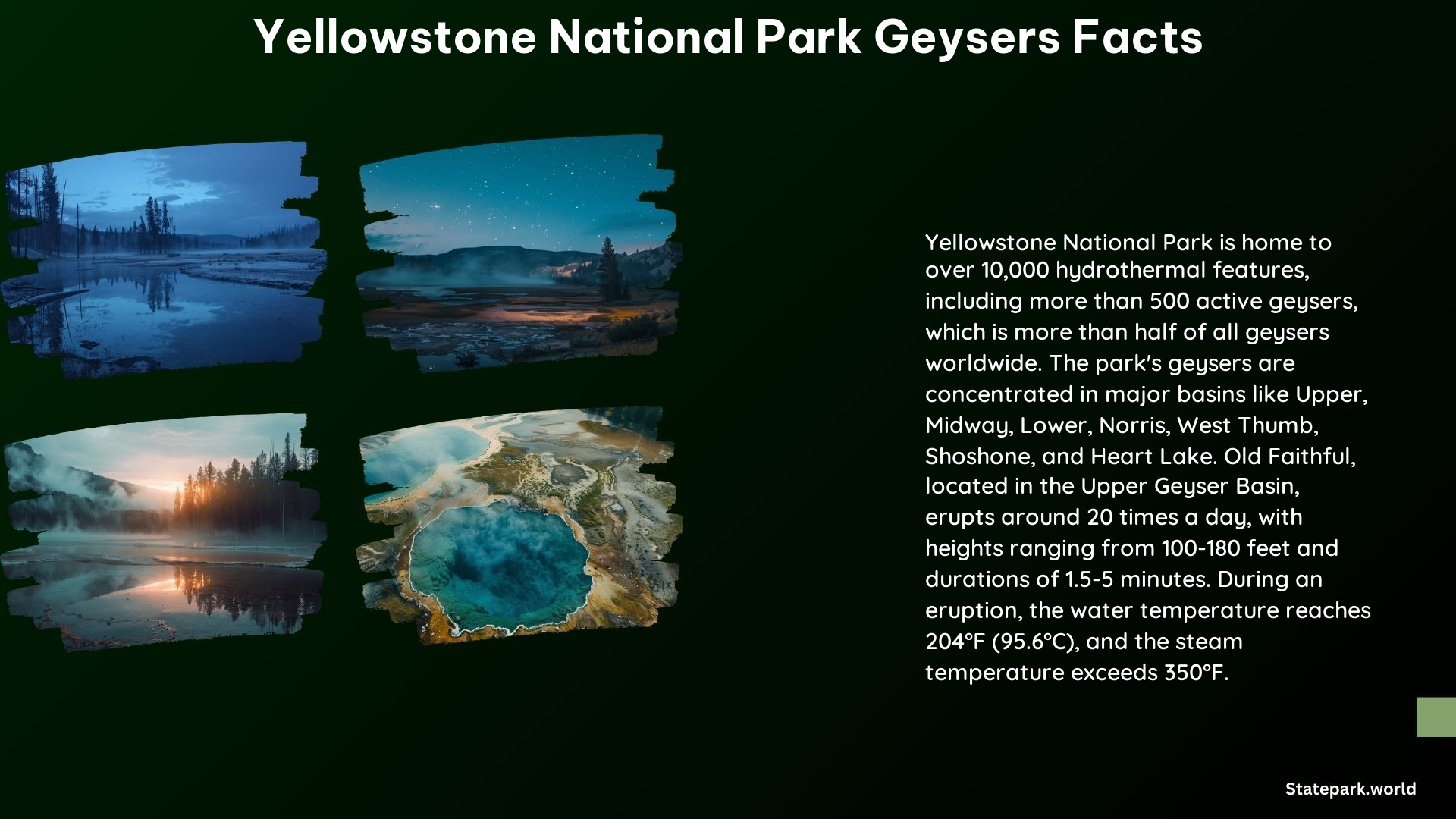Yellowstone National Park is home to an incredible array of geothermal features, including more than 500 active geysers, which is over half of the world’s total number of geysers. The park’s hydrothermal systems are the result of millions of years of geology at work, with heat from volcanic activity heating groundwater and creating the thermal features.
Number of Active Geysers in Yellowstone National Park
Yellowstone National Park has more than 500 active geysers, which is over half of the world’s total number of geysers. This makes Yellowstone the home to the largest concentration of geysers in the world.
Types of Thermal Features in Yellowstone National Park

There are four main types of thermal features found in Yellowstone National Park:
- Geysers: These are hot springs that erupt periodically due to the buildup of steam and pressure.
- Hot Springs: These are similar to geysers but have larger underground channels, allowing for rapid circulation of water and maintaining equilibrium through evaporation and convection.
- Fumaroles/Steam Vents: These are holes or vents that release steam into the air, often without forming a pool of water.
- Mudpots: These are areas where super-heated steam forces its way through water-saturated sediment, creating bursts of mud into the air.
Old Faithful Geyser
One of the most famous geysers in Yellowstone National Park is Old Faithful. It erupts around 20 times a day, with eruptions predicted with a 90% confidence rate within a 10-minute variation. The geyser can shoot water up to 180 feet in the air, with an average height of 130-140 feet. Eruptions typically last between 1.5 to 5 minutes.
Other Facts about Yellowstone National Park Geysers
- Yellowstone is home to over 10,000 hydrothermal features, including geysers, hot springs, mud pots, and fumaroles.
- The park’s hydrothermal systems are the result of millions of years of geology at work, with heat from volcanic activity heating groundwater and creating the thermal features.
- Microorganisms called thermophiles thrive in the hot temperatures of Yellowstone’s hydrothermal features, often creating colorful mats and stripes.
Conclusion
Yellowstone National Park is a true wonder of nature, with its vast array of geothermal features, including the largest concentration of geysers in the world. From the iconic Old Faithful to the lesser-known but equally fascinating mud pots and fumaroles, the park’s hydrothermal systems offer a glimpse into the incredible power and beauty of the Earth’s natural processes.
References
- https://www.yellowstonepark.com/things-to-do/geysers-hot-springs/
- https://www.yellowstonepark.com/things-to-do/geysers-hot-springs/about-old-faithful/
- https://www.yellowstone.org/10-yellowstone-facts/
- https://www.nps.gov/yell/learn/nature/hydrothermal-features.htm
- https://yellowstone.net/geysers/
